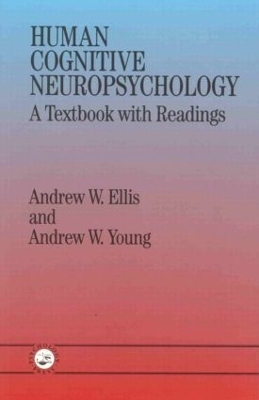
Human Cognitive Neuropsychology
A Textbook With Readings
Seiten
1996
Psychology Press Ltd (Verlag)
978-0-86377-715-8 (ISBN)
Psychology Press Ltd (Verlag)
978-0-86377-715-8 (ISBN)
An extended version of the first edition, this book includes a set of research review papers which supplement the contents of each chapter by providing a discussion of current research issues and detailed investigations of individual cases.
This textbook augments the first edition through the inclusion of a set of reseach and review papers selected by the authors to supplement the contents of each chapter by providing a discussion of research issues and detailed investigation of individual cases. One or two papers supplement each chapter. A short introduction to each set makes clear the nature of their contribution and how they relate to each chapter's contents. Some of the papers are short reviews of theoretical contributions; others are case studies in the tradition of cognitive neuropsychology. At least three of the main trends discernible in cognitive neuropsychology in the 1990s are represented in the chosen papers. The first is the use of connectionist models to simulate patterns of impairment in brain-injured patients. The second is the growing convergence between cognitive neuropsychology and neuroscience: cognitive neuropsychologists are becoming increasingly interested in the brain processes that underlie the preserved and damaged psychological processes they study. The third trend is the involvement of cognitive neuropsychologists in work on therapy and rehabilitation.
This textbook augments the first edition through the inclusion of a set of reseach and review papers selected by the authors to supplement the contents of each chapter by providing a discussion of research issues and detailed investigation of individual cases. One or two papers supplement each chapter. A short introduction to each set makes clear the nature of their contribution and how they relate to each chapter's contents. Some of the papers are short reviews of theoretical contributions; others are case studies in the tradition of cognitive neuropsychology. At least three of the main trends discernible in cognitive neuropsychology in the 1990s are represented in the chosen papers. The first is the use of connectionist models to simulate patterns of impairment in brain-injured patients. The second is the growing convergence between cognitive neuropsychology and neuroscience: cognitive neuropsychologists are becoming increasingly interested in the brain processes that underlie the preserved and damaged psychological processes they study. The third trend is the involvement of cognitive neuropsychologists in work on therapy and rehabilitation.
Ellis, Andrew W.; Young, Andrew W.
What is Cognitive Neuropsychology? Object Recognition. Visual and Spatial Abilities. Face Processing. Producing Spoken Words. Recognizing and Understanding Spoken Words. Spelling and Writing. Reading. Further Language and Processes. Memory.
| Erscheint lt. Verlag | 17.12.1996 |
|---|---|
| Verlagsort | Hove |
| Sprache | englisch |
| Maße | 156 x 234 mm |
| Gewicht | 1300 g |
| Themenwelt | Geisteswissenschaften ► Psychologie ► Allgemeine Psychologie |
| Geisteswissenschaften ► Psychologie ► Biopsychologie / Neurowissenschaften | |
| Geisteswissenschaften ► Psychologie ► Verhaltenstherapie | |
| Geisteswissenschaften ► Sprach- / Literaturwissenschaft ► Anglistik / Amerikanistik | |
| Geisteswissenschaften ► Sprach- / Literaturwissenschaft ► Literaturgeschichte | |
| Geisteswissenschaften ► Sprach- / Literaturwissenschaft ► Literaturwissenschaft | |
| ISBN-10 | 0-86377-715-5 / 0863777155 |
| ISBN-13 | 978-0-86377-715-8 / 9780863777158 |
| Zustand | Neuware |
| Haben Sie eine Frage zum Produkt? |
Mehr entdecken
aus dem Bereich
aus dem Bereich
wie Affekte innere Entwicklung ermöglichen
Buch | Softcover (2023)
Klett-Cotta (Verlag)
CHF 41,95
Buch | Softcover (2024)
Hogrefe Verlag
CHF 46,50


